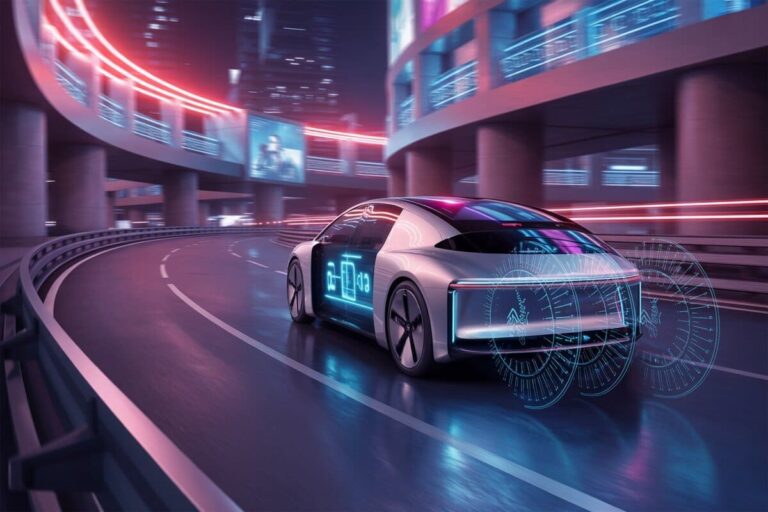Imagine this: you hop into your car, give a voice command, and let it drive you to work while you binge-watch your favorite series or answer that urgent email.
Sounds like something out of a sci-fi movie, right? But self-driving cars are closer than you think.
The big question is: when will we see these futuristic vehicles ruling our streets?
In this article, we’ll dive into what’s happening in the market, the technological and legal challenges, and when we can actually expect self-driving cars to become part of our daily lives.
Spoiler alert: it might be sooner than you think! 🚗🤖
What Are Self-Driving Cars and How Do They Work?
Before we get to the timeline, let’s cover the basics. Self-driving cars are vehicles that operate without human drivers.
They use a combination of sensors, cameras, radars, and artificial intelligence to make decisions on the road. Think of them as super-smart robots on wheels.
Companies like Tesla, Waymo (a subsidiary of Alphabet, Google’s parent company), and even automotive giants like GM and Ford are fiercely competing to launch the most advanced technology.

The promise? Greater safety, less traffic, and even lower carbon emissions.
Why Aren’t They Everywhere Yet?
It sounds simple, but putting self-driving cars on the road is a massive challenge. Here are some of the biggest hurdles delaying this revolution:
- Complicated Legislation: Regulating something so new is tricky. Each country (and sometimes each state) has its own rules, making standardization difficult.
- Safety Concerns: Despite advancements, accidents involving self-driving cars still raise concerns. Nobody wants to be the first to fully trust a driverless car.
- Infrastructure: Roads, traffic signals, and even signs need to align with the technology. In some places, this means redesigning entire cities.
- Public Acceptance: Let’s be real—many people still don’t trust machines with something as serious as driving.
So, When Are They Really Coming?
The most honest answer is: it depends. The technology is advancing quickly, but widespread adoption varies by region.
- United States and Europe: Level 4 self-driving cars (almost fully autonomous) are already being tested in several cities. Waymo, for example, has autonomous taxi services running in parts of Phoenix, Arizona. If progress continues, these cars could become common by 2030.
- Latin America and Brazil: It might take a little longer. Infrastructure and regulatory challenges are bigger, but that doesn’t mean then’re out of the game. Some companies are already testing the technology in specific areas.
- Asia: Countries like China and Japan are investing heavily and could lead this race in the coming years.
What Does This Mean for Us?
When self-driving cars finally become routine, a lot will change. Here are a few transformations we can expect:
- No More Traffic Stress: Goodbye to parking struggles and rush-hour honking.
- Increased Safety: Most accidents happen due to human error, something self-driving cars aim to drastically reduce.
- Shifts in the Job Market: Professions like taxi, truck, and rideshare drivers may be impacted, but new opportunities will emerge.
- Fewer Cars on the Road: With fully automated rideshare services, owning a personal car might become a thing of the past.
Conclusion
Self-driving cars are on their way, and the revolution is inevitable. Despite the challenges, the promises are huge: greater safety, efficiency, and convenience in transportation.
It may take a few more years before we see these futuristic machines dominating the streets, but one thing is certain: the future will be incredible for those ready to embrace this technology.
So, are you ready to leave the driver’s seat and trust the autopilot?




